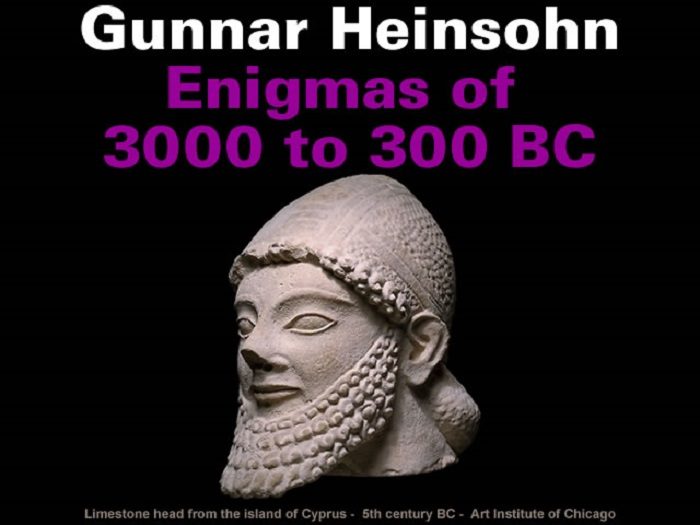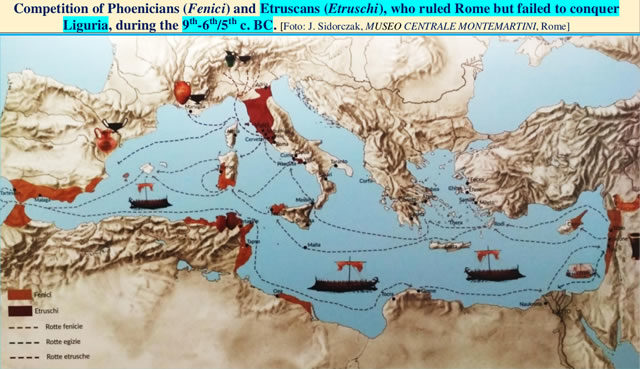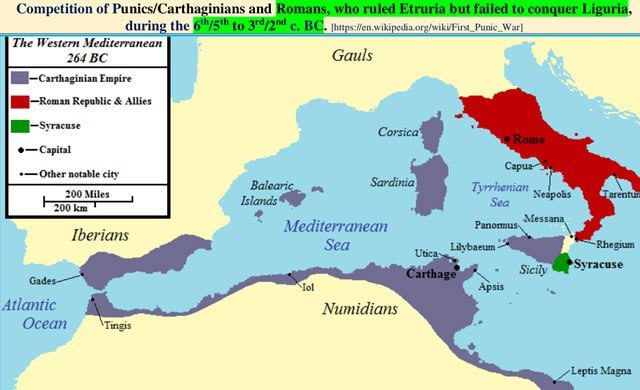Tim Cullen collected many observations to support such an assumption.
The two maps below also show indisputable similarities between the political constellations in the Phoenician period of the Etruscans (9th-6th c.), and in the Punic period of the Romans (6th-3rd c.).
Indeed, nowhere can one find Punic (centered on Carthage) or Roman cities (in Italy) with building layers from the 6th-3rd century BC that are super-imposed upon building layers of Phoenician (centered on Tyre) or Etruscan cities from the 9th-6th century BC.
The strata found in the ground are - roughly speaking - dated either 9th-6th or 6th-3rdcentury.
There is, per individual site, always only a single package of strata to fill one but never two consecutive periods.
Archaeologists don't deny it.
They explain it by saying:
"Etruscan cities have generally been built over from the Romans onwards, and houses have left little trace"Their firm belief in our textbook chronology forbids them to imagine the simultaneity of both histories.
(Etruscan Architecture 2018).
Two different narratives about one and the same history were, indeed, transformed into two consecutive histories.
This did not disturb anyone until archaeology began and hard evidence could only be found for one of the two periods.
The similarity of the, e.g., portrait styles (eyes, hair, beards etc.) in the 9th/8th century and in the 5th/4th century were then interpreted as a consciously planned renaissance.
However, such an interpretation cannot replace the missing strata and residential quarters in the ground.
Continue reading the article in PDF format by clicking here.






From the Summary: All based in the utilization of that 'Bible'... one lie built on another... the usual way.... and when you pull one string, it pulls out the entire knot, the entire Lie... careful there, or the entire House of Cards will collapse... and isn't that inevitable in our 'endtimes'?
Ah.... here at the end of the conclusion comes this very aspect that points to the liars: So, that is the underlying agenda... to protect the OWO... as it crumbles beneath the feet of all those liars protecting it, setting it up as divine and untouchable... Typical BS... seems they didn't get the memo.... 'out with their OWO, in with their NWO'... they aren't needed in the new one... Seems Gunnar had to stick that in the end.. the very end... is that the scientific protocol of western science? A test of Gunnar's loyalty... hard to stop once you start, no?